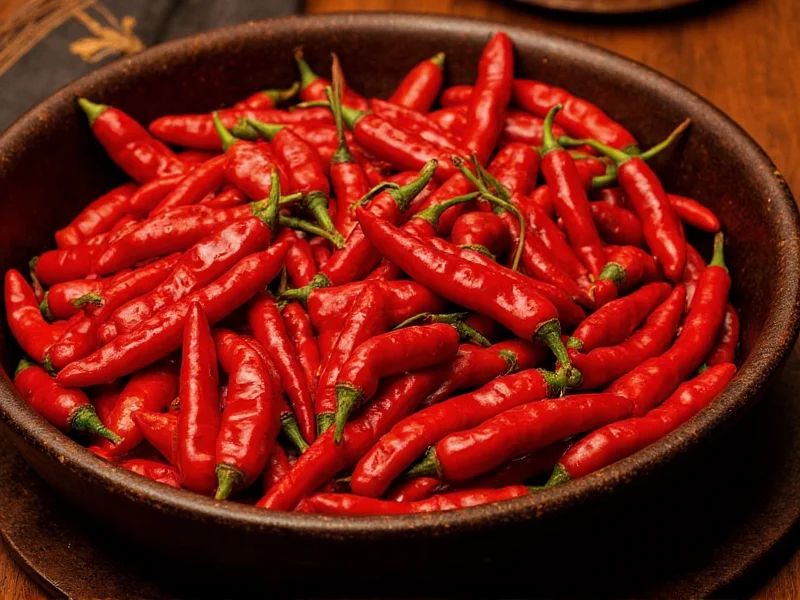Capsaicin isn't just a random irritant—it's a precisely evolved defense mechanism. This colorless, odorless compound binds to TRPV1 receptors in mammals, which normally detect dangerous heat levels. When capsaicin activates these receptors, your brain interprets it as actual burning, even though no physical damage occurs. What makes chilli chilli fundamentally comes down to this unique neurochemical interaction that’s absent in sweet peppers.
The Evolutionary Purpose of Capsaicin
Chili plants developed capsaicin as a survival strategy. Unlike birds, which disperse seeds intact through their digestive systems, mammals tend to crush seeds—reducing germination success. By producing capsaicin, chilies effectively deter mammalian predators while remaining attractive to bird dispersers, who lack TRPV1 receptors sensitive to capsaicin. This evolutionary adaptation explains why what makes chilli chilli serves a precise ecological function rather than existing randomly.
Factors Influencing Capsaicin Production
Several elements determine how spicy a chili becomes:
- Genetic factors: Different chili varieties contain varying capsaicinoid profiles (capsaicin, dihydrocapsaicin, etc.)
- Environmental stress: Drought, temperature extremes, and soil conditions can increase capsaicin concentration
- Ripeness: Fully mature chilies generally contain more capsaicin than green, unripe ones
- Plant position: Peppers exposed to more sunlight typically develop higher heat levels
Measuring the Heat: The Scoville Scale Explained
The Scoville Organoleptic Test, developed in 1912, originally measured chili heat through human taste panels. Today, high-performance liquid chromatography provides precise measurements of capsaicin concentration, converted to Scoville Heat Units (SHU). The table below shows common peppers and their heat levels:
| Chili Variety | Scoville Heat Units | Capsaicin Concentration |
|---|---|---|
| Bell Pepper | 0 SHU | 0.000% |
| Jalapeño | 2,500–8,000 SHU | 0.022–0.098% |
| Habanero | 100,000–350,000 SHU | 0.180–0.320% |
| Ghost Pepper | 855,000–1,041,427 SHU | 0.760–1.000% |
| Carolina Reaper | 1,400,000–2,200,000 SHU | 1.200–1.800% |
Why Humans Enjoy What Makes Chilli Chilli
Despite capsaicin triggering pain receptors, humans have developed a cultural affinity for spicy foods. When we consume chilies, our bodies release endorphins to counteract the perceived threat, creating a natural “high.” This biological response, combined with chilies' antimicrobial properties (which helped preserve food before refrigeration), explains why spicy cuisine evolved independently across multiple continents. The very compound that deters mammals has become a culinary treasure for humans who’ve learned to appreciate what makes chilli chilli.
Practical Implications for Cooks and Consumers
Understanding what makes chilli chilli helps in managing heat levels:
- Removing the placenta (white ribs) significantly reduces heat while preserving flavor
- Fat-containing foods like dairy neutralize capsaicin better than water (which spreads it)
- Cooking doesn't destroy capsaicin—it merely redistributes the compound
- Genetic breeding has created “ghost” peppers with capsaicin concentrated only in specific plant parts
Emerging Scientific Perspectives
Recent research reveals capsaicin's potential therapeutic applications beyond what makes chilli chilli spicy. Studies show capsaicin may help manage chronic pain through receptor desensitization, reduce inflammation, and even exhibit anti-cancer properties in laboratory settings. The same compound that evolved to protect seeds now shows promise in medical applications—demonstrating how understanding natural compounds can yield unexpected benefits.











 浙公网安备
33010002000092号
浙公网安备
33010002000092号 浙B2-20120091-4
浙B2-20120091-4